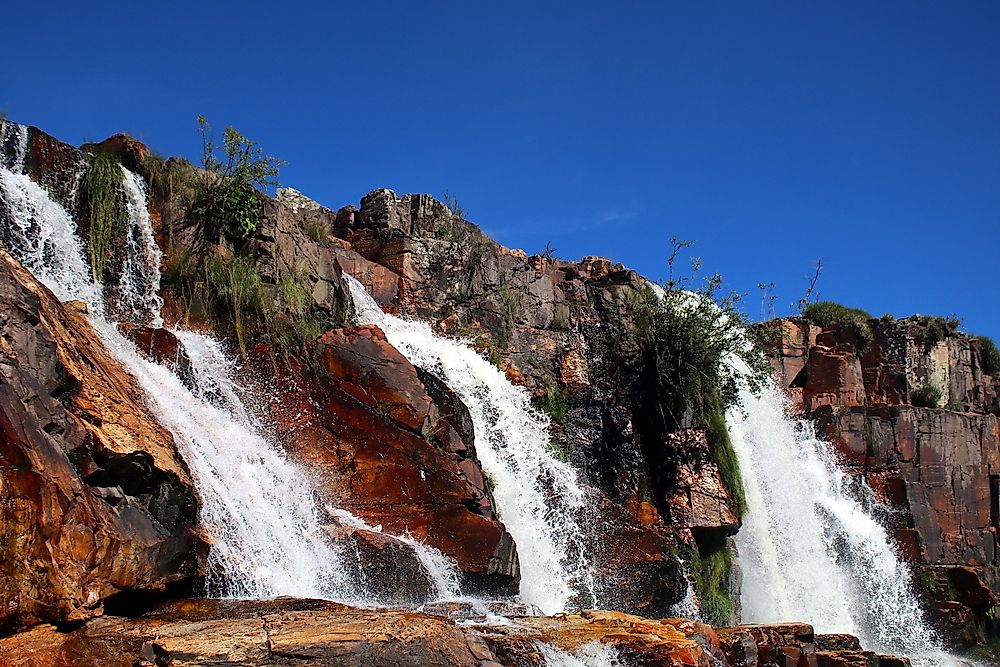The Biodiversity Hotspot of the Cerrado

What Is The Cerrado?
The Cerrado is a vast expanse of tropical savanna ecoregion located in the South American country of Brazil. The Cerrado is the second largest of the major habitat types of the country after the Amazon rainforest. It covers 21% of the land area of Brazil. The World Wide Fund for Nature classifies the ecoregion as the most biologically rich savanna in the world. The high levels of endemism exhibited here, and the significant threats faced by the Cerrado’s biodiversity makes it an ideal candidate to be classified as a biodiversity hotspot.
Climate Of The Cerrado
The Cerrado ecoregion experiences a semi-humid tropical climate with two dominant seasons, the wet and the dry. The average temperature is between 22 and 27 °C. The average precipitation is between 800 to 2000 mm.
Flora Of The Cerrado
The Cerrado features about 10,000 species of plants including unique types of vegetation. The savanna exists between strips of gallery forests. The wet campo type of vegetation grows between the gallery forests and savanna. The savannas of Cerrado have heterogeneous canopy cover. Among the most diverse families of flora found in the Cerrado are the Leguminosae, Myrtaceae, Rubiaceae, Malpighiaceae, etc. Vegetation in the gallery forests closely resembles that of the nearby rainforests. The soils here are well drained with low pH, magnesium and calcium.
Fauna Of The Cerrado
A great diversity of invertebrates are found in the Cerrado. The termites and leaf cutter ants are the primary herbivores in the region and are an important part of the food chain as well as they help in decomposing organic matter. The Cerrado also hosts the world’s highest diversity of galling insects. Over 150 species of amphibians, 837 species of birds, 161 mammalian species, and 120 reptilian species call the ecoregion their home. Most of the birds found here breed in the Cerrado while a few are migrants. The birds prefer to inhabit the gallery forests while 27% breed in open habitats. Some examples of the birds living here are the hyacinth macaw, solitary eagle, toco toucan, the Brazilian merganser, etc. The mammals also prefer to inhabit the more sheltered gallery forests. Eleven mammalian species are endemic to the Cerrado. Some of the notable species living here are the Pampas deer, maned wolf, giant otter, ocelot, cougar, jaguar, black howler monkey, black-tufted marmoset, etc.
Human Population Of The Cerrado
The Cerrado region was originally inhabited by the indigenous people of the region. However, after European colonization, settlement patterns began to change, roads and railways were built, and land began to be cleared for commercial-scale crop and animal agriculture. A large number of industries were also set up in the region. By 1994, about 695,000 square km of the Cerrado had been altered to an 'anthropic landscape’. The Brazilian steel industry’s demand of charcoal also led to the large-scale deforestation of land.
Conservation Of The Cerrado
It is vital to conserve the species of the Cerrado. However, since a large number of industries and farmlands are located here, it is difficult to select areas to conserve. The fact that the Cerrado is a mosaic of diverse flora and fauna makes selection of landscape to be protected a difficult choice. Only 1.5% of the Cerrado biome is currently protected. Efforts are being made by the government and international organizations to hasten the conservation of the Cerrado’s unique flora and fauna to ensure their future survival.











